Peddars Way
5: Swaffham to Castle Acre
16 May 2010
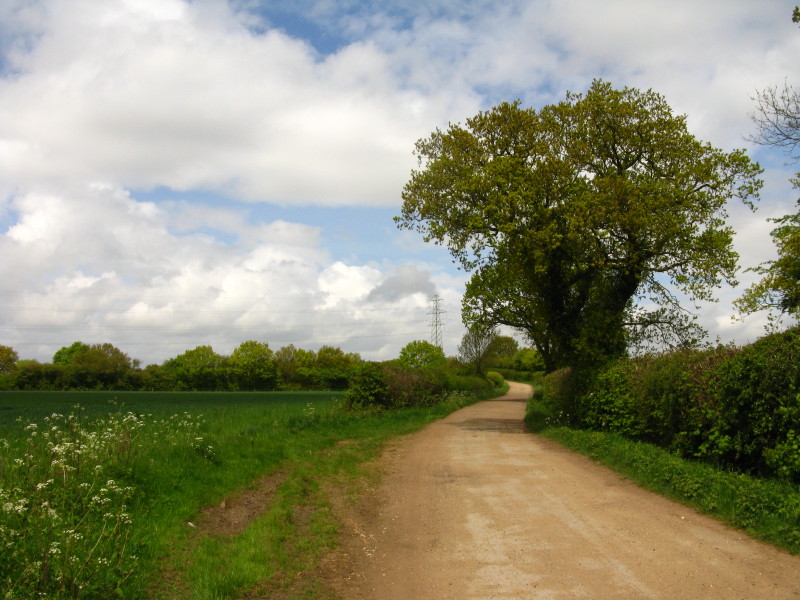
The first section of today's walk along the Peddars Way is along
Procession Lane, officially a public road, but clearly sees relatively
little traffic and is closer to a dirt road - pretty unusual for a
public road in England.
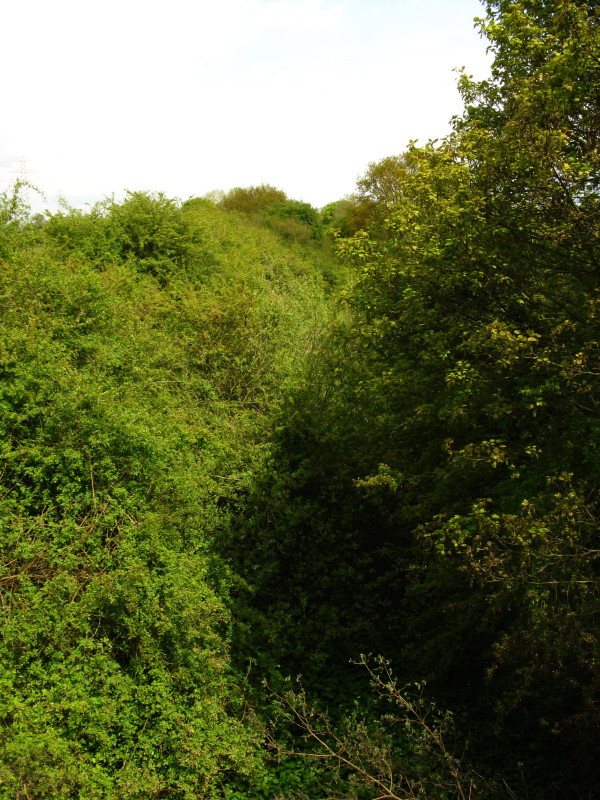
Crossing the line of the railway from Swaffham to Dereham

Now officially only a bridleway, but hardly any worse than the road.
After the first kilometre or so along Procession Road, we have lost the
historic route of the Roman road, which we won't regain until after
Castle Acre.
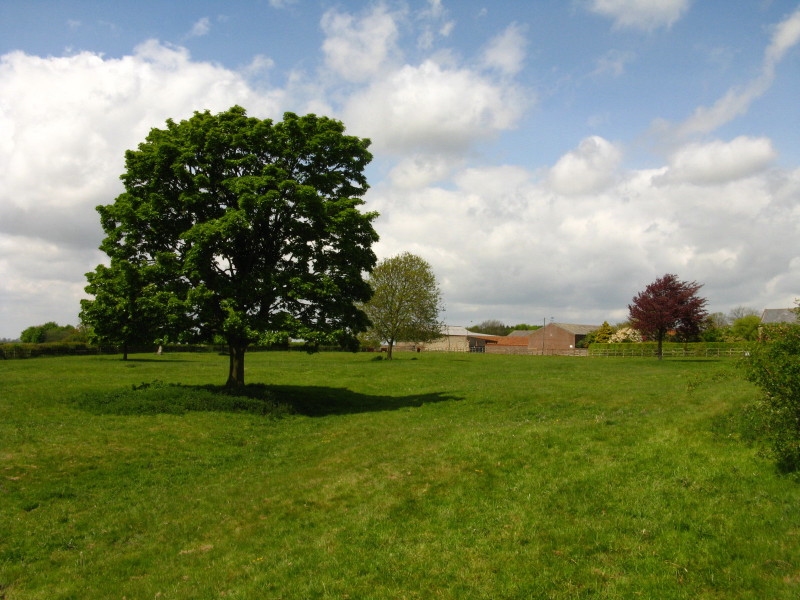
The dips and hollows in this field are the remains of the village of
Great Palgrave which has disappeared like so many in Norfolk and
Suffolk.

Looking across fields to Castle Acre, with the remains of the Priory on
the left.
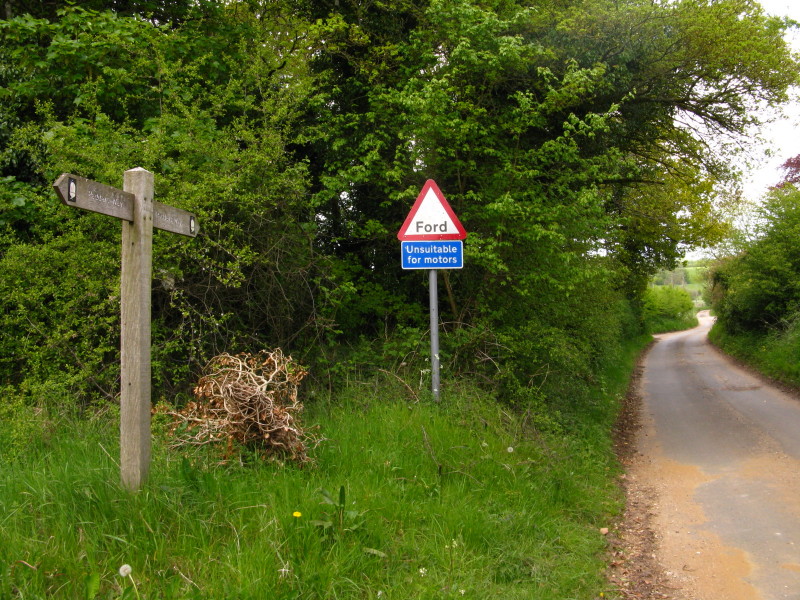
Today's walk was almost entirely along roads, albeit some verge walking,
so it was good to see an "unsuitable for motors" sign, which is always
an indication that, while this may be legally a road, we are unlikely to
see much traffic. A ford is always fun, too.
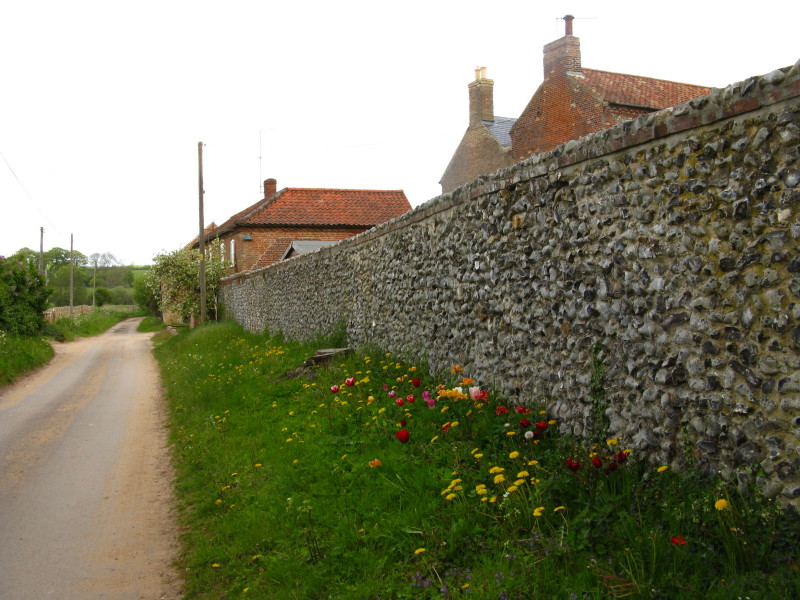
The first section to Church Farm, here, was good enough, but after that
it got rather narrow.
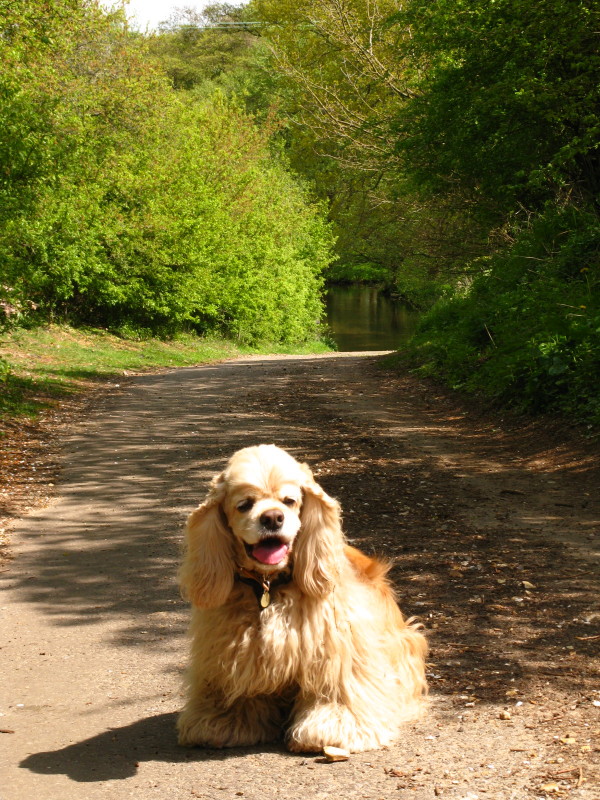
Approaching that ford - it looks jolly wet.
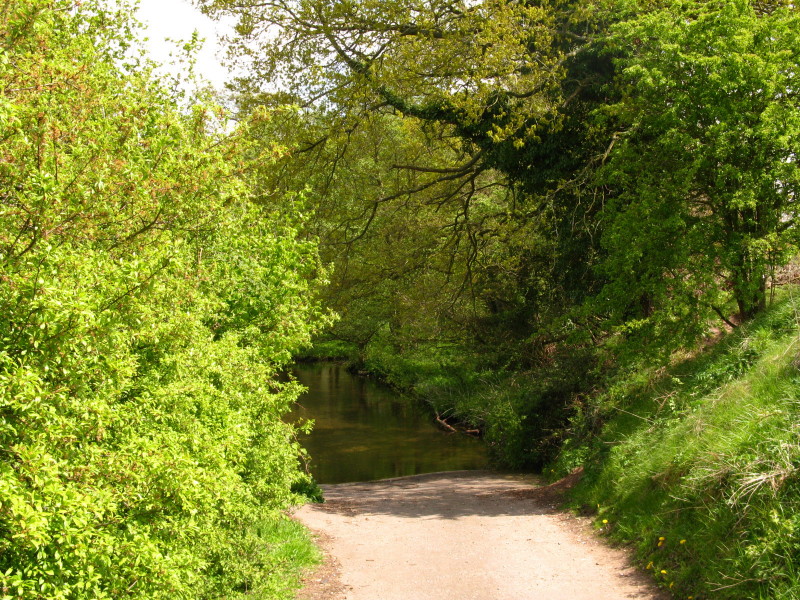
Hmmm....
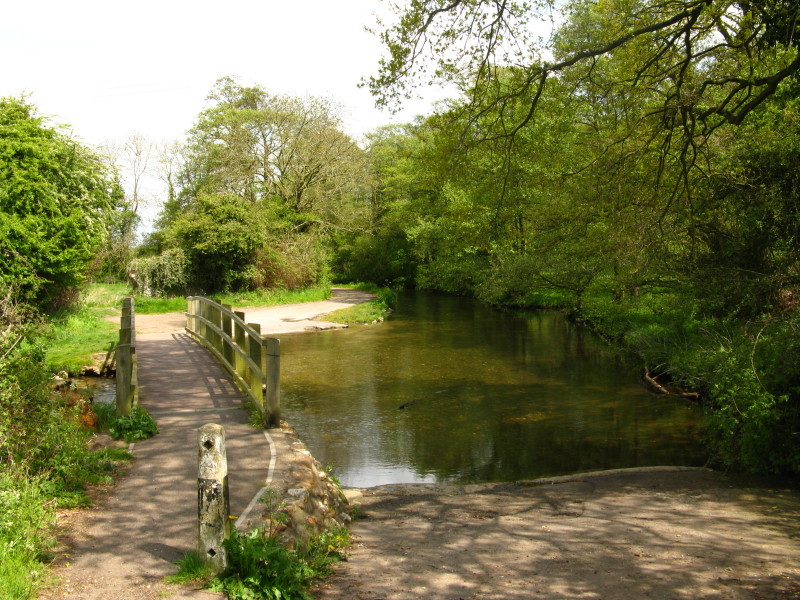
Ah, that looks much easier.
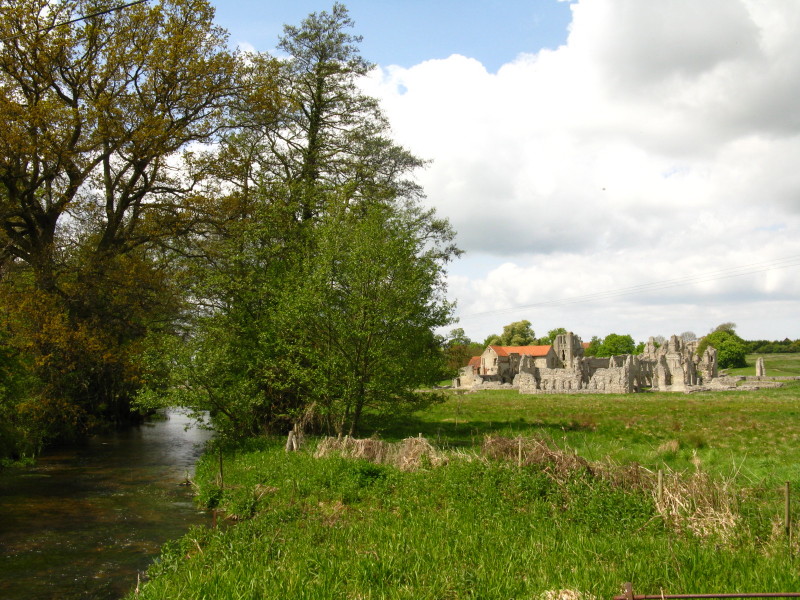
From the conveniently located bench on the other side of the River Nar,
a good view to the Priory. The prior is thought to have been founded in
1089 by William de Warenne, the son the 1st Earl of Surrey. Originally
the priory was sited within the walls of Castle Acre Castle, but this
proved too small and inconvenient for the monks, hence the priory was
relocated to the present site the next year. Various additions to the
buildings continued until the priory was dissolved in 1537 under Henry
VIII.
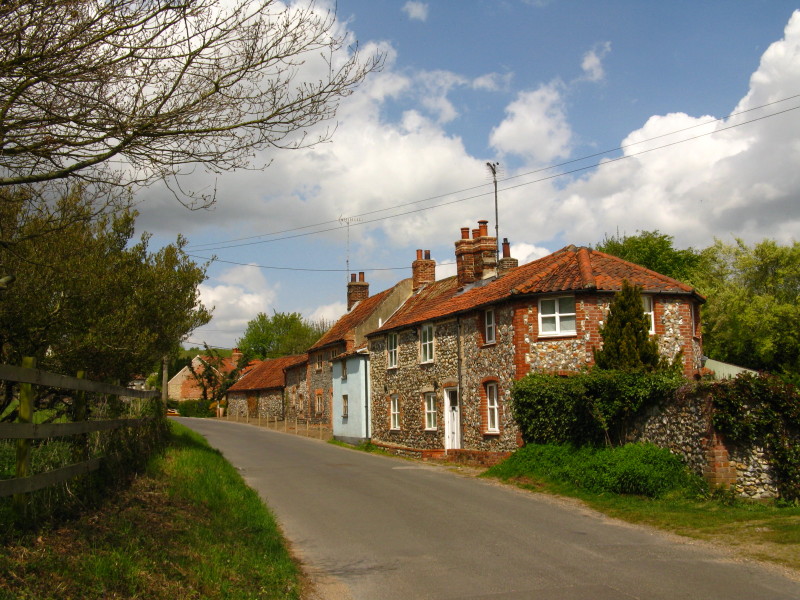
Coming into Castle Acre, which proved to be a delightful village
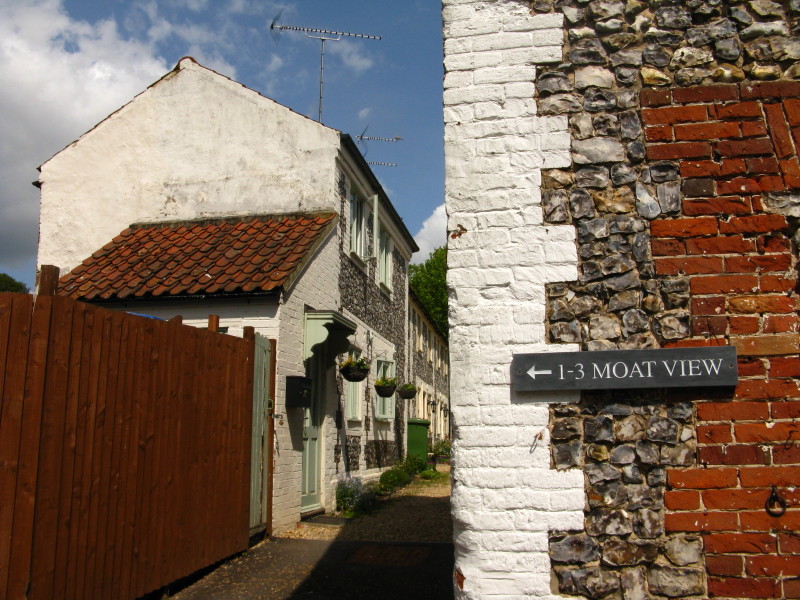
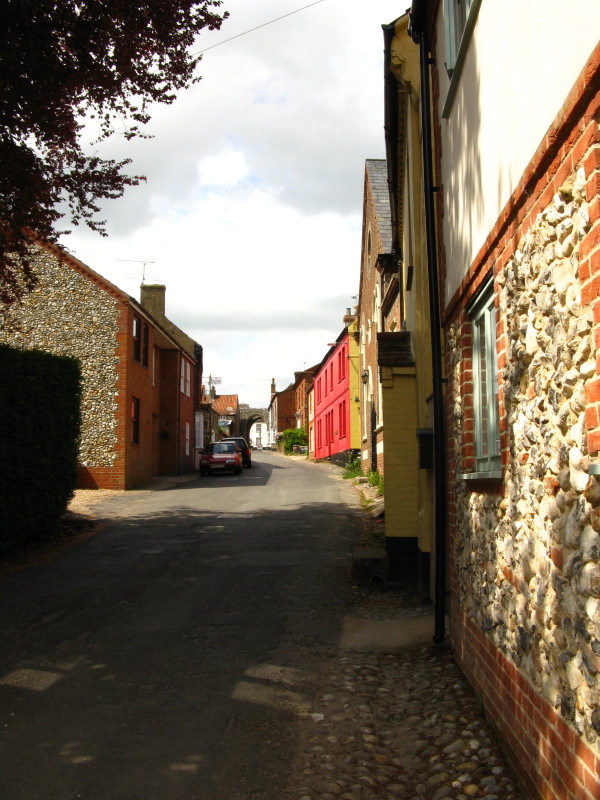
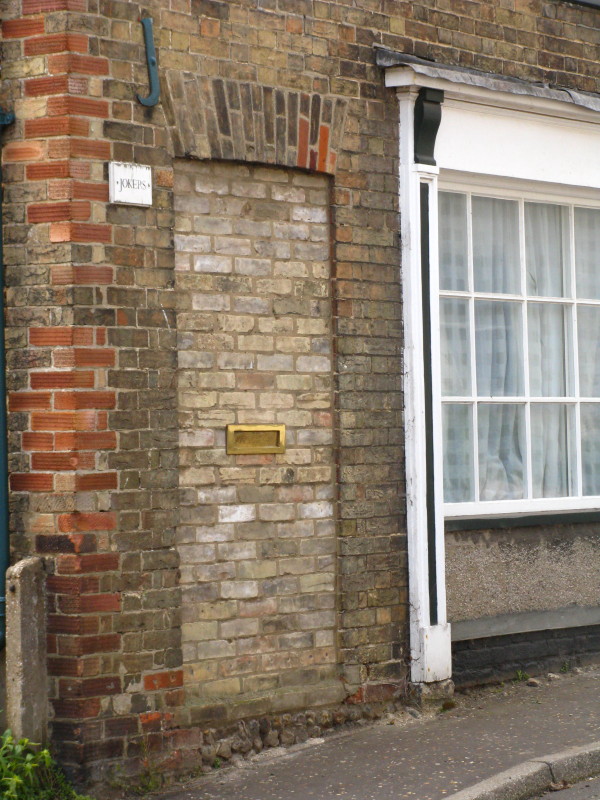
"Jokers" appears to be the name of the house!
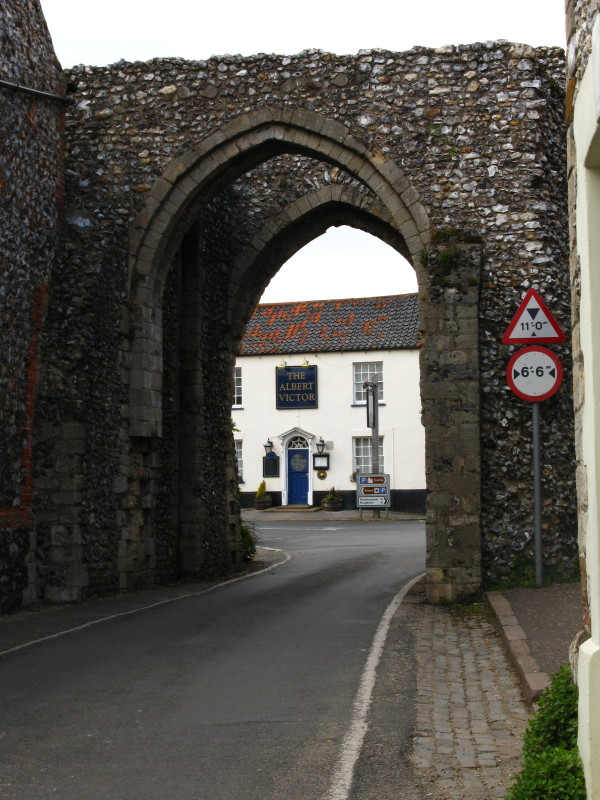
The Bailey Gate, the only remaining gate of the fortified town.
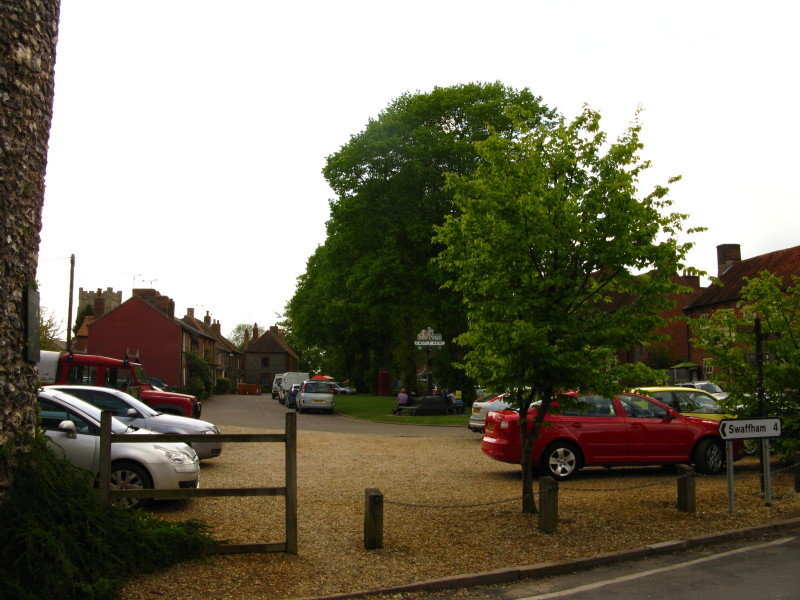
The pleasant scene on the other side.
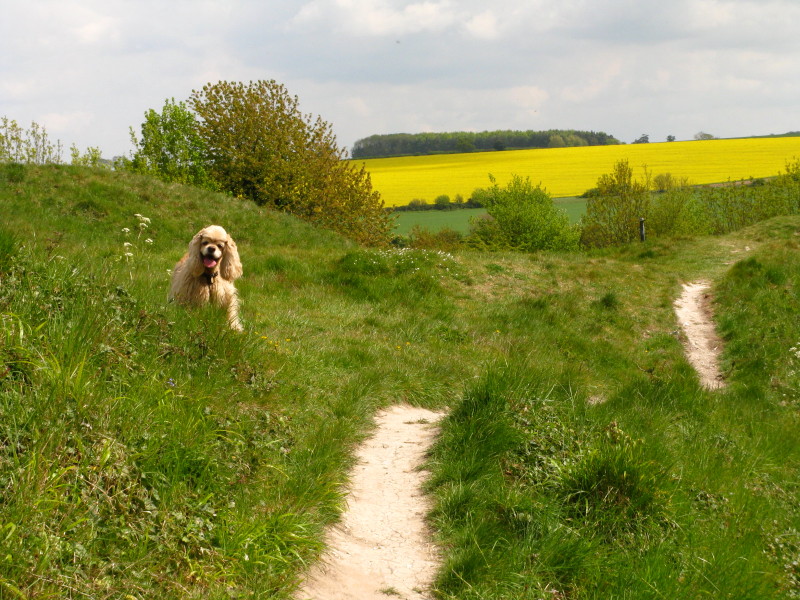
George on the banks of Castle Acre Castle
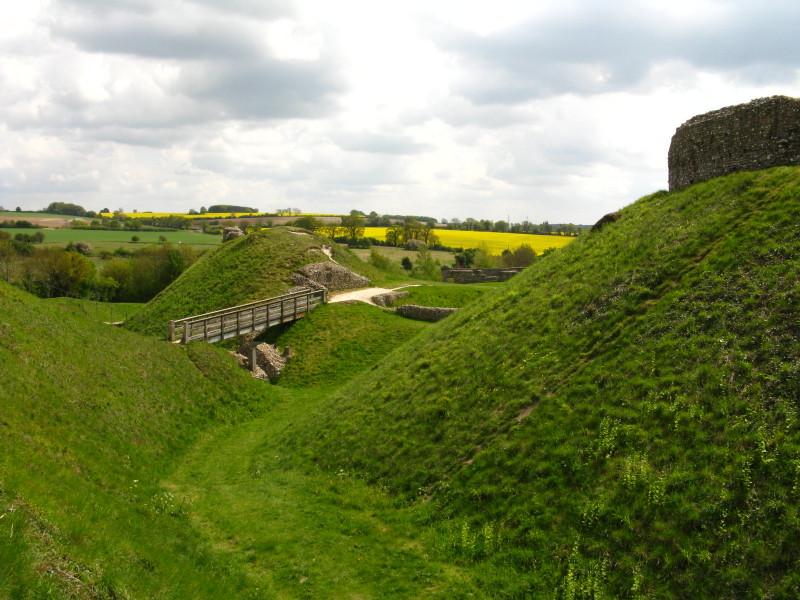
It's quite an impressive construction, and great fun to wander round. As
Lucy was by now on her way to pick us up, I decided to go no further as
this was such a splendid climax to the walk, and we explored the place
at our leisure..

The castle was founded soon after the Norman Conquest of 1066 by William
de Warenne, the first Earl of Surrey, as his most important estate in
Norfolk. Because it was here that the Peddars Way crossed the River Nar,
it was of some strategic importance. The motte-and-bailey construction
can be seen here, with the bailey centre picture beyond the bridge, and
the high motte on the right surrounded by curtain walls.
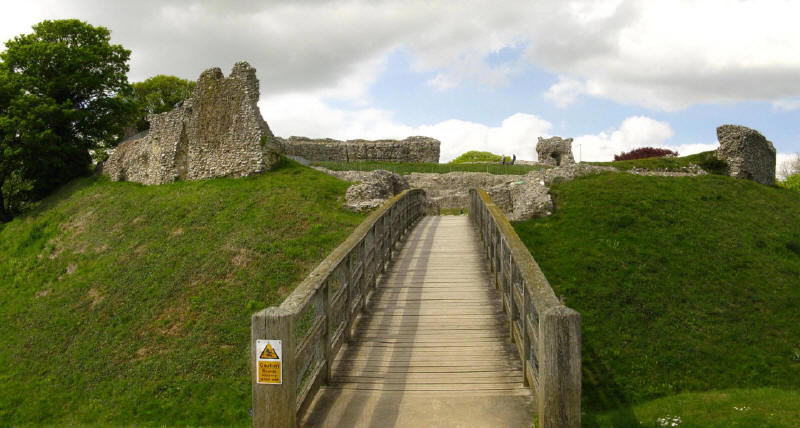
Looking across the bridge to the motte with its fortified residence
inside.
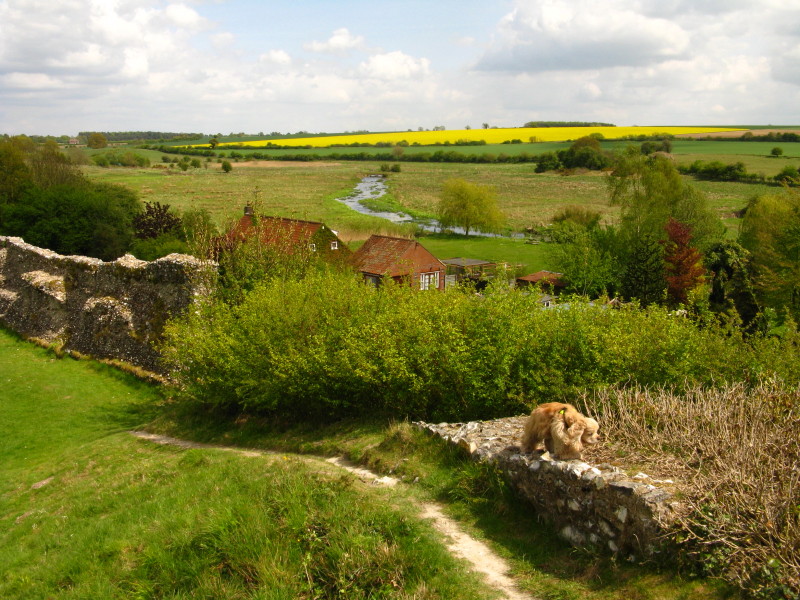
From near the south end of the bailey, looking across the valley of the
River Nar.

Across the bailey to the motte. The bailey was where most of the
buildings were located, including living quarters, stores and workshops
- only in the event of a fierce attack would the withdrawal be made to
the motte.
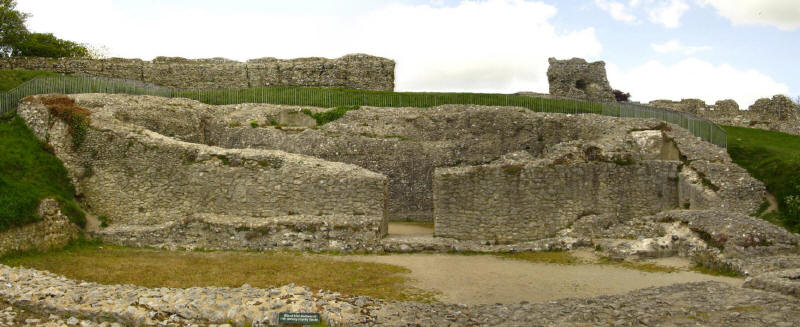
Inside the motte, the remains of the fortifed keep - its walls were
strengthened for protection in the 1139-53 Civil War, but after that it
fell into disuse and the buildings in the bailey were enhanced to offer
more sumptuous accommodation for the Warenne Earls.
Total along the Peddars Way 8.1 km in 2 hours 5 mins - plus another 1 km around the castle.
Despite the large amounts of road-walking, enough to command
interest and a lovely walk in the sunshine. We're 57% of the way to the sea!
|